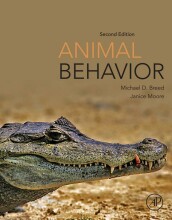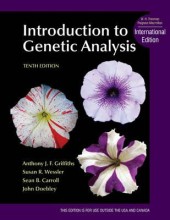Population genetics
44 important questions on Population genetics
In the evolutionary sense, some heritable feature of an individual’s phenotype that improves its chances of survival and reproduction in the existing environment.
A measure of the commonness of an allele in a population; the proportion of all alleles of that gene in the population that are of this specific type.
Breeding of successive generations by the deliberate human selection of certain phenotypes or genotypes as the parents of each generation.
- Higher grades + faster learning
- Never study anything twice
- 100% sure, 100% understanding
Natural selection that results in an equilibrium with intermediate allele frequencies.
A period of one or several consecutive generations of contraction in population size.
The relative probability of survival and reproduction for a genotype.
Selection that changes the frequency of an allele in a constant direction, either toward or away from fixation for that allele.
Preferential mating between phenotypically unlike partners.
A group of individuals used to detect variable nucleotide sites by comparing the partial genome sequences of these individuals with one another.
An allele for which all members of the population under study are homozygous, and so no other alleles for this locus exist in the population.
A random difference in the frequency of an allele or a genotype in a new colony as compared to the parental population that results from a small number of founders.
The probability that two alleles drawn at random from the gene pool will be different.
The movement of individuals (or gametes) between populations.
The sum total of all alleles in the breeding members of a population at a given time.
The mix of genes that results when individuals have ancestry from more than one subpopulation.
The type (or form) of a haploid segment of a chromosome as defined by the alleles present at the loci within that segment.
A network that shows relationships among haplotypes and the positions of the mutations defining the haplotypes on the branches.
A genome-wide haplotype map.
The stable frequency distribution of genotypes A/A, A/a, and a/a, in the proportions of p2, 2pq, and q2, respectively (where p and q are the frequencies of the alleles A and a), that is a consequence of random mating in the absence of mutation, migration, natural selection, or random drift
A measure of the genetic variation in a population; with respect to one locus, stated as the frequency of heterozygotes for that locus.
When two copies of a gene in an individual trace back to the same copy in an ancestor
A reduction in vigor and reproductive success from inbreeding.
A bias in mate choice that arises from the amount of geographic distance between individuals, causing individuals to be more apt to mate with a neighbor than another member of their species farther away
Deviation in the frequencies of different haplotypes in a population from the frequencies expected if the alleles at the loci defining the haplotypes are associated at random.
The specific place on a chromosome where a gene is located.
A locus composed of several to many copies (repeats) of a short (about 2 to 6 bp) sequence motif. Different alleles have different numbers of repeats.
The constant rate of substitution of amino acids in proteins or nucleotides in nucleic acids over long evolutionary time.
The probability that a copy of an allele changes to some other allelic form in one generation.
The differential rate of reproduction of different types in a population as the result of different physiological, anatomical, or behavioral characteristics of the types.
An allele that has no effect on the fitness of individuals that possess it.
Heterozygosity or gene diversity averaged over all the nucleotide sites in a gene or any other stretch of DNA.
A simple count of the number of haplotypes at a locus in a population.
The study of genetic variation in populations and changes over time in the amount or patterning of that variation resulting from mutation, migration, recombination, random genetic drift, natural selection, and mating systems.
The division of a species or population into multiple genetically distinct subpopulations.
A situation in which like phenotypes mate more commonly than expected by chance.
The process by which a favorable allele is brought to a higher frequency in a population because individuals carrying that allele have more viable offspring than other individuals.
Natural selection that removes deleterious variants of a DNA or protein sequence, thus reducing genetic diversity.
Changes in allele frequency that result because the genes appearing in offspring are not a perfectly representative sampling of the parental genes.
A single nucleotide polymorphism (SNP) for which the less common allele occurs at a frequency below 5 percent.
A measure of the fitness of an individual or genotype relative to some other individual or genotype, usually the most fit individual or genotype in the population.
The number of variable or polymorphic nucleotide sites in a set of homologous DNA sequences.
The loss of fitness in (or selective disadvantage of) one genotype relative to another genotype.
Roughly how many SNP's are there in human populations?
How can variation at microsatellite loci be detected?
Microsatellites are variations in repeats that can be detected on a gel by size differences
between the repeats.
The question on the page originate from the summary of the following study material:
- A unique study and practice tool
- Never study anything twice again
- Get the grades you hope for
- 100% sure, 100% understanding
































